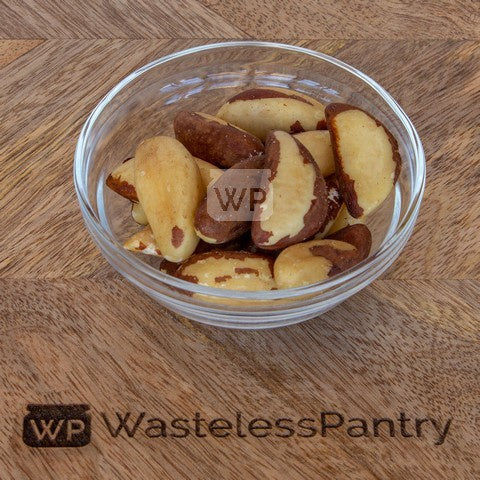The Benefits and Uses of Wholemeal Flour
- Shopmundaring Wastelesspantry

- Oct 3, 2024
- 2 min read
Wholemeal flour, also known as whole wheat flour, is a versatile ingredient made from grinding the entire wheat kernel, including the bran, germ, and endosperm. This process preserves the natural nutrients and fibers found in the grain, making wholemeal flour a healthier alternative to refined flour. In this article, we’ll explore the benefits, uses, and tips for incorporating wholemeal flour into your cooking and baking.

Nutritional Benefits
High in Fiber: Wholemeal flour contains significantly more dietary fiber compared to white flour. Fiber aids digestion, helps maintain a healthy weight, and reduces the risk of chronic diseases such as heart disease and type 2 diabetes.
Rich in Nutrients: Wholemeal flour is packed with essential vitamins and minerals, including B vitamins, iron, magnesium, and zinc. These nutrients play crucial roles in energy production, immune function, and overall health.
Lower Glycemic Index: Foods made with wholemeal flour tend to have a lower glycemic index, meaning they cause a slower rise in blood sugar levels. It can help manage energy levels and reduce cravings.
Heart Health: The antioxidants and phytonutrients found in wholemeal flour can help reduce inflammation and improve cardiovascular health.
Culinary Uses
Bread: Wholemeal flour is an excellent choice for making bread, especially whole wheat loaves, pita bread, and flatbreads. Its high fiber content contributes to a hearty texture and enhances the flavor.
Pasta: Wholemeal flour can be used to make fresh pasta. The added fiber and nutrients create a more nutritious alternative to traditional pasta.
Baked Goods: For a healthier twist, substitute wholemeal flour in recipes for muffins, pancakes, cookies, and cakes. While it can make baked goods denser, combining it with other flours can yield lighter results.
Thickening Agent: Wholemeal flour can be used as a thickener in soups, stews, and sauces, adding flavor and nutrition to your dishes.
Coatings: Wholemeal flour can be used to coat fried or baked foods, providing a crunchy texture and rich flavor.
Tips for Cooking and Baking with Wholemeal Flour
Mix with Other Flours: If you’re new to using wholemeal flour, start by substituting a portion of it for all-purpose flour in your recipes. A common ratio is 50/50, which allows for a balance of texture and flavor.
Adjust Liquid: Wholemeal flour absorbs more moisture than white flour, so you may need to increase the liquid in your recipes slightly. Start with an extra tablespoon or two and adjust as needed.
Let Dough Rest: Allowing Dough made with wholemeal flour to rest can improve its texture. This resting period gives the flour time to hydrate fully.
Sift for Lighter Bakes: To achieve a lighter texture in baked goods, sift the wholemeal flour to aerate it before mixing it with the other ingredients.
Store Properly: Wholemeal flour can spoil more quickly than white flour due to the natural oils in the germ. Store it in an airtight container in a cool, dark place, or refrigerate it for extended freshness.
Conclusion
Wholemeal flour is a nutritious and versatile ingredient that can enhance your cooking and baking while providing numerous health benefits. By incorporating wholemeal flour into your recipes, you can enjoy its rich flavor and added nutrients, making it a great choice for health-conscious individuals and families. Whether you’re baking bread, making pasta, or thickening sauces, wholemeal flour is a wonderful addition to any kitchen.



Comments